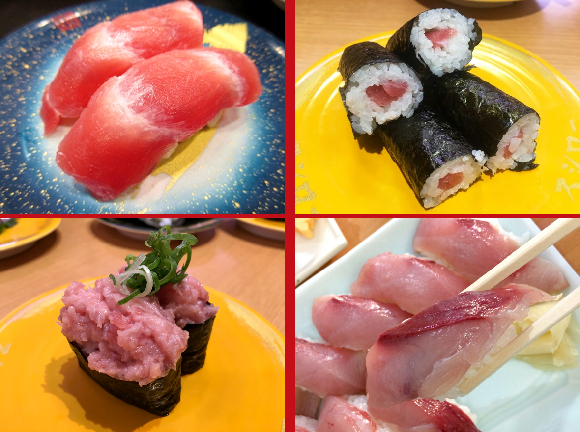
You can love many kinds of sushi, but for your last piece, you can only have one, so which one should it be?
Kaitenzushi restaurants, where you grab plates of sushi off a conveyor belt as they stream past you, are a fantastic choice for indecisive diners. Since you’re not locked into any sort of set meal, you can grab whatever you like, in whatever quantity you like, on a whim, allowing you to make adjustments on the fly like a seafood-loving dynamo.
But while the freedom and flexibility of kaitenzushi may be limitless, your stomach capacity, of course, is finite. So as you feel yourself getting full, at some point you’re going to have to answer a difficult question: What should your last piece of sushi be?
That’s one of the things Japanese fishery company Maruha Nichiren asked Japanese diners in its annual kaitenzushi survey, which this year collected responses from 1,000 participants (500 men and 500 women). Let’s take a look at the top 10 choices for how to cap a sushi meal (and if you think you can never have too much sushi, you’ll be happy to know that thanks to ties and Japanese linguistic quirks, there are actually 12 types of sushi in this “top 10”).
10 (tie). Otoro (3.2 percent of respondents)
10 (tie). Negitoro (3.2 percent)
Otoro (extra-fatty tuna) and negi toro (minced tuna belly with green onions, as seen above) are tasty, but also two of the more decadent items on the menu at a sushi restaurant, and perhaps a bit heavy of an ending note for some people’s tastes. There’s also the fact that otoro is just about the most expensive kind of sushi, so if you’ve already plowed through several other plates of premium-priced selections, you might find yourself reaching for something that’s lighter in your stomach and on your wallet (as proof, we’re too cheap to even have a picture of otoro).
8 (tie). Uni (3.5 percent)
8 (tie). Hamachi/buri (3.5 percent)
Another tie, one half of which is uni (sea urchin). On the other end, we’ve got hamachi and buri, which are both actually the same fish: yellowtail. Certain species of fish get called by different names in Japanese depending on how old the fish is, so younger yellowtail are hamachi while more mature specimens are buri, highly prized for its firm texture and especially sweet flavor when caught in winter (and while we’re at it, there’s also inada, yellowtail that’s even younger than hamachi, which is also delicious, though somewhat harder to find in restaurants).
7. Maguro akami (3.6 percent)
We’re going to see tuna on the list several times, but in this case we’re referring to the standard, lean cut of the fish, which has always been a sushi stalwart.
6. Engawa (3.9 percent)
If you’re learning Japanese, engawa is a two-for-one vocabulary word. Not only does it refer to the outer edge of a cut of flounder (seen here sitting atop slices of shiso, or Japanese basil), it also means “veranda,” since that’s the part of a house found at its outer edge.
4 (tie). Tekkamaki (4.7 percent)
4 (tie). Ebi (4.7 percent)
Tekkamaki, thin tuna rolls, usually comes sliced into either four or six morsels, making it a convenient thing to share with friends if you’re all craving just a bit more sushi, but don’t think you can finish off a whole plate by your selves. Meanwhile, ebi (shrimp) being served boiled instead of raw provides a clean, non-fishy flavor to finish on.
3. Chutoro (5.4 percent)
Medium-fatty tuna is more moderate in price and fattiness than otoro, and so it’s a comfortably affordable luxury to have lingering on your taste buds as you walk away from the counter.
2. Tamago (5.8 percent)
The humble tamago (egg) might seem like an anticlimactic closer, but Japanese-style omelets have an enticing sweetness to them, and so making your last piece of sushi tamago is almost like eating a refreshing dessert.
1. Salmon (10.5 percent)
And finally, the survey participants’ favorite finale was salmon, which gets called by the corrupted pronunciation saamon as often as it does the indigenous Japanese “shake.”
Salmon has a number of things going for it. Delicious as it is, it’s also got a clean finish, so you won’t find yourself in need of a palate cleanser. It’s also low-priced and light in oil, making it a guilt-free option in more ways than one.
But salmon no doubt owes a lot of its first-place finish to the simple fact that it’s consistently picked by Japanese diners as their favorite kind of sushi, and that trend continued in Maruha Nichiro’s most recent poll. In addition to being the top choice for final piece of sushi, salmon was the number-one pick for “first piece of sushi to eat,” and also for “type of sushi you often eat” at kaitenzushi restaurants. Oh, and it swept those ranking regardless of whether you’re counting the 1,000 respondents as a whole or dividing them into responses from men and women. Just one more arrow to have in your quiver should some ill-informed foodie try to tell you that “people in Japan don’t eat raw salmon.”
Cast your vote:
Source: Maruha Nichiro
Photos ©SoraNews24
[ Read in Japanese ]
Follow Casey on Twitter, where he says there’s never a bad time for amberjack sushi.
[ Read in Japanese ]

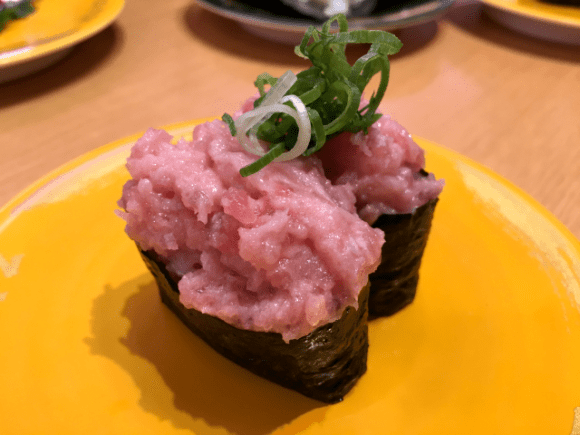
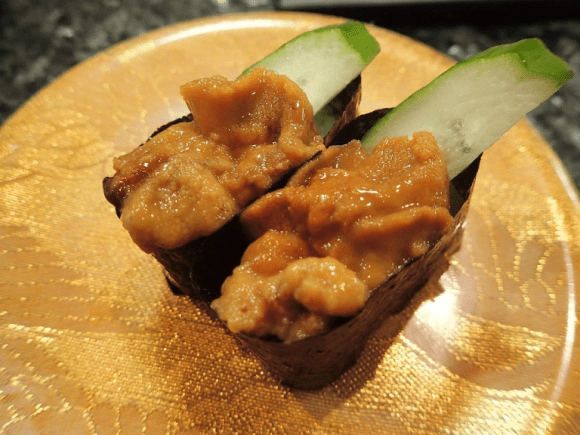
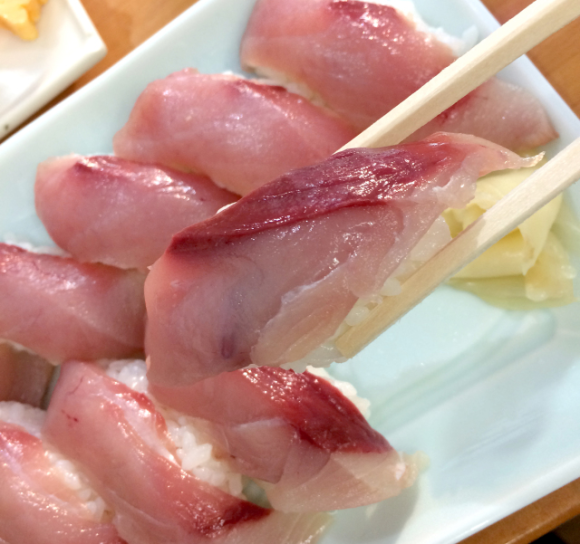
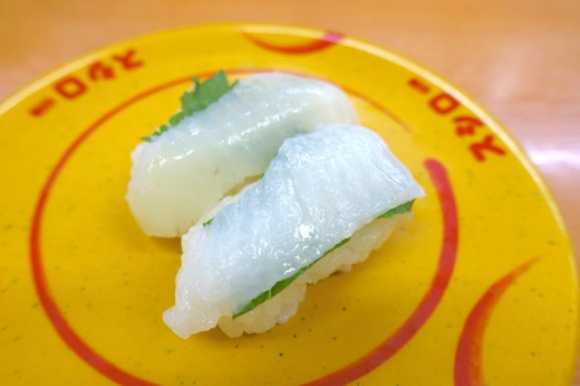

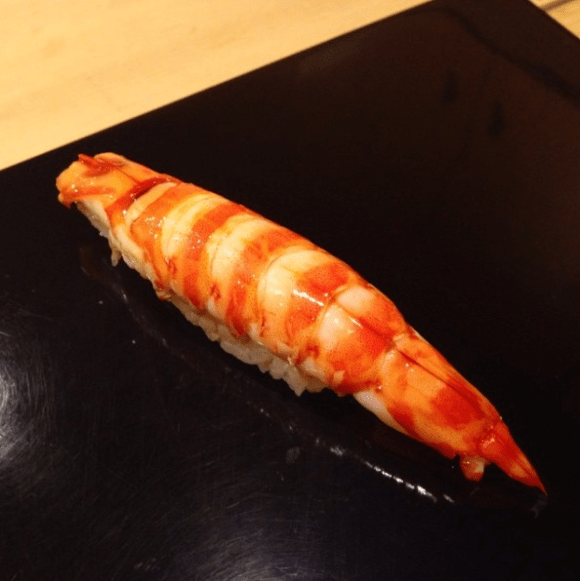
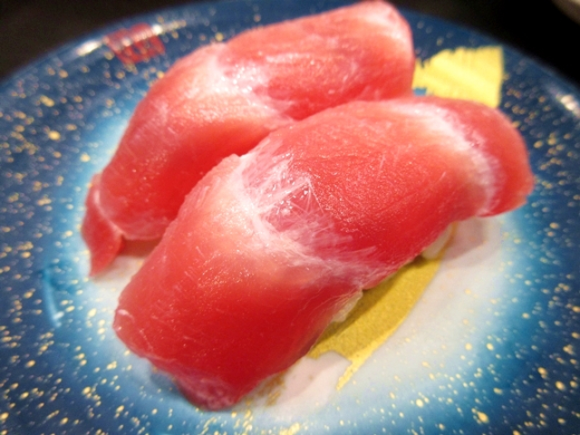
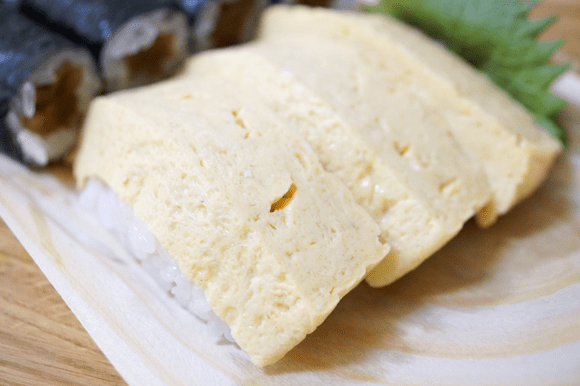
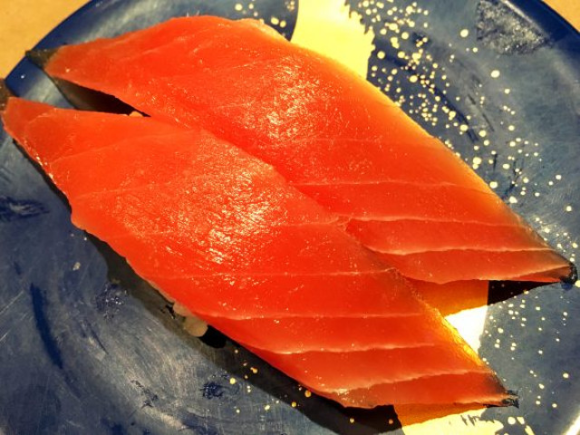
 Which Japanese conveyor belt sushi chain has the best egg sushi?【Taste test】
Which Japanese conveyor belt sushi chain has the best egg sushi?【Taste test】 Which Japanese conveyor belt sushi chain has the best yellowtail sushi?【Taste test】
Which Japanese conveyor belt sushi chain has the best yellowtail sushi?【Taste test】 Here’s what a 10,000-yen Sushi Cake from Japan looks like
Here’s what a 10,000-yen Sushi Cake from Japan looks like Japan super budget dining – What’s the best way to spend 1,000 yen at sushi restaurant Sushiro?
Japan super budget dining – What’s the best way to spend 1,000 yen at sushi restaurant Sushiro? Japanese diners pick their eight favorite types of sushi, create mouthwatering dinner blueprint
Japanese diners pick their eight favorite types of sushi, create mouthwatering dinner blueprint Japan’s new difficult-to-drink-from beer glass protects your liver, but it’s a brutal experience
Japan’s new difficult-to-drink-from beer glass protects your liver, but it’s a brutal experience New Nintendo Lego kit is a beautiful piece of moving pixel art of Mario and Yoshi【Photos】
New Nintendo Lego kit is a beautiful piece of moving pixel art of Mario and Yoshi【Photos】 Come play hide-and-seek on a deserted Japanese island this August and November
Come play hide-and-seek on a deserted Japanese island this August and November To combat declining birth rate, Japan to begin offering “Breeding Visas” to foreigners
To combat declining birth rate, Japan to begin offering “Breeding Visas” to foreigners How to order snacks on a Shinkansen bullet train in Japan
How to order snacks on a Shinkansen bullet train in Japan Demon Slayer: Kimetsu no Yaiba gets new roller coaster attractions and food at Universal Studios Japan
Demon Slayer: Kimetsu no Yaiba gets new roller coaster attractions and food at Universal Studios Japan High-fashion Totoro cuddle purse is like an elegant stroll in the forest【Photos】
High-fashion Totoro cuddle purse is like an elegant stroll in the forest【Photos】 New Pokémon ice cream, dessert drinks, and cool merch coming to Baskin-Robbins Japan【Pics】
New Pokémon ice cream, dessert drinks, and cool merch coming to Baskin-Robbins Japan【Pics】 Hello, cosmetics! Clinique teams up with Hello Kitty this summer for first-time collaboration
Hello, cosmetics! Clinique teams up with Hello Kitty this summer for first-time collaboration We check out the local flavors of the commonly confused Ome and Aomi areas of Tokyo in one day
We check out the local flavors of the commonly confused Ome and Aomi areas of Tokyo in one day Nintendo history you can feel – Super NES, N64, and GameCube controllers become capsule toys
Nintendo history you can feel – Super NES, N64, and GameCube controllers become capsule toys “The most Delicious Cup Noodle in history” – Japan’s French Cup Noodle wins our heart【Taste test】
“The most Delicious Cup Noodle in history” – Japan’s French Cup Noodle wins our heart【Taste test】 Starbucks releases a cute Frappuccino and Unicorn Cake…but not in Japan
Starbucks releases a cute Frappuccino and Unicorn Cake…but not in Japan Kyoto Tower mascot termination reveals dark side behind cute Japanese characters
Kyoto Tower mascot termination reveals dark side behind cute Japanese characters McDonald’s Japan’s Soft Twist Tower: A phantom ice cream only sold at select branches
McDonald’s Japan’s Soft Twist Tower: A phantom ice cream only sold at select branches Yabai Ramen: What makes this Japanese ramen so dangerous?
Yabai Ramen: What makes this Japanese ramen so dangerous? Finally! Nintendo Japan expands Switch 8-bit controller sales to everybody, Online member or not
Finally! Nintendo Japan expands Switch 8-bit controller sales to everybody, Online member or not Japanese government wants to build luxury resorts in all national parks for foreign tourists
Japanese government wants to build luxury resorts in all national parks for foreign tourists 10 things you should buy at 7-Eleven in Japan
10 things you should buy at 7-Eleven in Japan Studio Ghibli releases anime heroine cosplay dresses that are super comfy to wear
Studio Ghibli releases anime heroine cosplay dresses that are super comfy to wear Woman charged for driving suitcase without a license in Osaka
Woman charged for driving suitcase without a license in Osaka Studio Ghibli unveils My Neighbour Totoro miniature house model
Studio Ghibli unveils My Neighbour Totoro miniature house model Kyoto experiencing problems with foreign tourists not paying for bus fares, but not on purpose
Kyoto experiencing problems with foreign tourists not paying for bus fares, but not on purpose Fighting mild hunger with a Japanese soda that turns into jelly in the stomach【Taste test】
Fighting mild hunger with a Japanese soda that turns into jelly in the stomach【Taste test】 Studio Ghibli’s Howl’s Moving Castle tapestry unveiled in Japan for first time
Studio Ghibli’s Howl’s Moving Castle tapestry unveiled in Japan for first time McDonald’s new Happy Meals offer up cute and practical Sanrio lifestyle goods
McDonald’s new Happy Meals offer up cute and practical Sanrio lifestyle goods Sales of Japan’s most convenient train ticket/shopping payment cards suspended indefinitely
Sales of Japan’s most convenient train ticket/shopping payment cards suspended indefinitely Sold-out Studio Ghibli desktop humidifiers are back so Totoro can help you through the dry season
Sold-out Studio Ghibli desktop humidifiers are back so Totoro can help you through the dry season Japanese government to make first change to romanization spelling rules since the 1950s
Japanese government to make first change to romanization spelling rules since the 1950s Foreigner’s request for help in Tokyo makes us sad for the state of society
Foreigner’s request for help in Tokyo makes us sad for the state of society Ghibli founders Toshio Suzuki and Hayao Miyazaki contribute to Japanese whisky Totoro label design
Ghibli founders Toshio Suzuki and Hayao Miyazaki contribute to Japanese whisky Totoro label design Doraemon found buried at sea as scene from 1993 anime becomes real life【Photos】
Doraemon found buried at sea as scene from 1993 anime becomes real life【Photos】 Tokyo’s most famous Starbucks is closed
Tokyo’s most famous Starbucks is closed Princesses, fruits, and blacksmiths: Study reveals the 30 most unusual family names in Japan
Princesses, fruits, and blacksmiths: Study reveals the 30 most unusual family names in Japan Which Japanese conveyor belt sushi chain has the best tuna sushi?【Taste test】
Which Japanese conveyor belt sushi chain has the best tuna sushi?【Taste test】 There’s only one place in Japan where this kind of sushi isn’t red, but why?
There’s only one place in Japan where this kind of sushi isn’t red, but why? Esteemed Japanese sushi chain ranks the top 15 most popular sushi toppings among customers
Esteemed Japanese sushi chain ranks the top 15 most popular sushi toppings among customers This type of conveyor belt sushi tastes different in Tokyo than it does in Osaka, but why?
This type of conveyor belt sushi tastes different in Tokyo than it does in Osaka, but why? Japan’s top 10 cat names for 2017
Japan’s top 10 cat names for 2017 Sharpen your sushi-selecting skills with the High Speed Sushi-Go-Round Quiz! 【Videos】
Sharpen your sushi-selecting skills with the High Speed Sushi-Go-Round Quiz! 【Videos】 Which Japanese conveyor belt sushi chain has the best saltwater eel sushi?【Taste test】
Which Japanese conveyor belt sushi chain has the best saltwater eel sushi?【Taste test】 How to use Japan’s revolving sushi capsule toy for a literal revolving sushi meal at home
How to use Japan’s revolving sushi capsule toy for a literal revolving sushi meal at home Tokyo has a BLUE sushi restaurant with all-you-can-eat BLUE sushi for just 400 yen (US$3.50)
Tokyo has a BLUE sushi restaurant with all-you-can-eat BLUE sushi for just 400 yen (US$3.50) Will virtual plate procession become the new normal for conveyor belt sushi restaurants in Japan?
Will virtual plate procession become the new normal for conveyor belt sushi restaurants in Japan? Clever home sushi-making set puts a whole new spin on revolving sushi
Clever home sushi-making set puts a whole new spin on revolving sushi Sushi soup? We try Japan’s latest easy-to-make, so-crazy-it-might-work meal【Taste test】
Sushi soup? We try Japan’s latest easy-to-make, so-crazy-it-might-work meal【Taste test】 Which Japanese conveyor belt sushi chain has the best squid sushi?【Taste test】
Which Japanese conveyor belt sushi chain has the best squid sushi?【Taste test】 What should you use table salt for at a sushi restaurant? We asked a kaitenzushi maniac
What should you use table salt for at a sushi restaurant? We asked a kaitenzushi maniac Which Japanese conveyor belt sushi chain has the best bintoro sushi?【Taste test】
Which Japanese conveyor belt sushi chain has the best bintoro sushi?【Taste test】
Leave a Reply